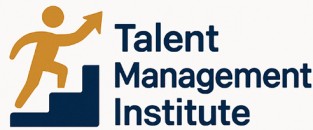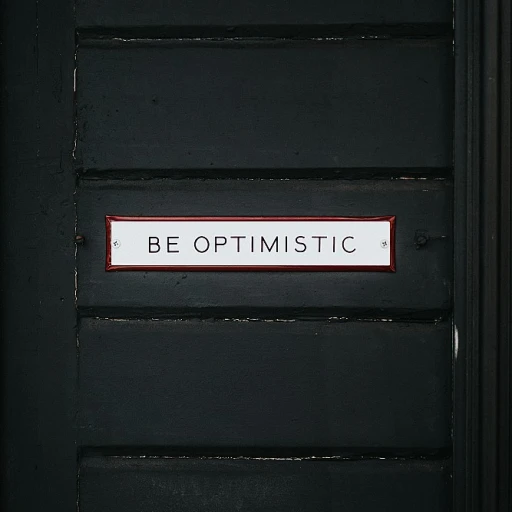
The Role of Behavioral Assessments in Talent Management
The Importance of Behavioral Evaluations in Talent Management
In the dynamic landscape of talent management, behavioral assessments have emerged as indispensable tools for organizations. These assessments provide valuable insights into an individual's behavioral tendencies, offering a deeper understanding of their fit within a company culture and their potential for various roles. The strategic use of such assessments can significantly enhance decision-making processes in recruitment and employee development. Behavioral assessments aim to evaluate different personality traits by presenting a series of questions that reveal a person's motivations, work style, and interpersonal skills. This understanding is crucial in determining how an individual will perform in a team setting or react under pressure. When combined with cognitive tests, which measure abstract reasoning and problem-solving skills, a "predictive assessment" can offer a comprehensive view of a candidate’s capabilities. For instance, a behavioral assessment might use a series of "question types" that solicit responses under the categories of patience, formality, or decision-making. Responses to these questions help generate a "score" that acts as a predictive indicator of job performance. The goal is to align these scores with "job target" profiles to ensure that the candidates are well-suited to the roles they are being considered for. A key advantage of using behavioral assessments in talent management is their ability to predict how individuals will adjust to job changes and challenges. By tapping into this predictive potential, employers can tailor their talent strategies to optimize workforce allocation in modern enterprises. More on this can be explored on the Talent Management Institute's blog on optimizing workforce allocation. As organizations continue to prioritize "predictive behavioral" insights, we can expect the integration of these assessments to deepen further. They not only highlight the "reference profiles" of potential hires but also serve as a vital component in understanding and nurturing existing employees. The emphasis on both "cognitive" and "behavioral" dimensions will undoubtedly enrich recruitment strategies and pave the way for more informed talent management decisions.Decoding PI Behavioral Assessment Answers
Understanding the PI Behavioral Assessment
The Predictive Index (PI) Behavioral Assessment is a powerful tool in the realm of talent management. It serves as a predictive behavioral assessment that helps organizations decode the behavioral patterns of potential and current employees. The assessment is designed to measure various behavioral traits that are crucial for job performance, including patience, formality, and decision-making abilities.
Breaking Down the Assessment Questions
The PI Behavioral Assessment comprises a series of questions that aim to uncover an individual's natural behavioral tendencies. These questions are not about finding a single correct answer but rather about understanding how a person will naturally respond in different work scenarios. The assessment test typically includes adjectives that describe various traits, and participants are asked to select those that best describe them.
Scoring and Interpretation
Once the assessment is completed, the responses are analyzed to generate a behavioral score. This score is then compared against a job target profile to determine the candidate's fit for a specific role. The assessment provides insights into abstract reasoning, problem-solving skills, and cognitive ability, which are essential for high-performance roles.
Practice and Preparation
While the PI Behavioral Assessment is not a test you can study for in the traditional sense, familiarizing yourself with the question types and practicing with similar assessments can help. Engaging in practice tests can enhance your understanding of the assessment's structure and improve your comfort level during the actual test.
For more insights on optimizing workforce allocation with behavioral assessments, you can explore this resource scheduler guide.
Implementing PI Behavioral Insights in Recruitment
Leveraging Behavioral Insights in Hiring Processes
Successfully employing PI Behavioral Assessment insights during recruitment requires a strategic approach. This involves a careful alignment of assessment results with the specific job demands. By identifying the correct answer patterns for each job target, organizations can strategically select candidates whose behavior aligns with the company's goals.
Behavioral assessments are pivotal in understanding how potential hires might work under specific conditions. Using this data, companies can predict how an applicant's behavioral tendencies might impact their performance in real-life situations. Moreover, the use of predictive techniques helps in highlighting unseen traits which are vital for success in particular roles.
- Examine cognitive abilities alongside behavioral tendencies. A cognitive assessment offers insights into a candidate's problem-solving, adaptive reasoning, and decision-making skills. These results should harmonize with the behavioral data to form a comprehensive understanding of the candidate.
- Consider the question types tailored for the job when designing your assessment. Focus on question categories that will yield the most relevant insights, such as those targeting abstract reasoning or patience formality.
- Analyze assessment scores critically. A higher score might not always be indicative of a correct match. Instead, look for traits and adjectives that correlate with the job's demands and the team's dynamics.
When implementing PI Behavioral Assessments, maintaining a structured test prep schedule can enhance outcomes. Encouraging candidates to engage in practice tests can familiarize them with the format, thereby reducing anxiety and improving the validity of results.
Additionally, successful implementation depends on the use of insights for candidate development. After the recruitment phase, these insights can guide both onboarding and future personnel strategies. One effective way to integrate these analytics is by exploring the best strategies for time management and resource allocation through targeted plans, thus elevating the overall efficiency of the workforce.
Enhancing Employee Development with Behavioral Insights
Leveraging Behavioral Insights for Employee Growth
Incorporating insights from PI Behavioral Assessments into employee development strategies can significantly enhance the growth trajectory of individuals within an organization. These assessments provide a comprehensive understanding of an employee's behavioral tendencies, cognitive abilities, and decision-making styles, which are crucial for tailoring personalized development plans.
One of the primary benefits of using behavioral insights is the ability to identify the correct answer to how an employee might react in various work scenarios. This understanding allows managers to align development opportunities with the employee's natural inclinations and strengths. For instance, if an assessment reveals high scores in abstract reasoning and problem-solving, the employee might be well-suited for roles that require innovative thinking and strategic planning.
Customizing Development Plans
Customizing development plans based on behavioral assessment results involves a few key steps:
- Identify Strengths and Areas for Improvement: Use the assessment test results to pinpoint areas where the employee excels and where they might need additional support or training.
- Set Realistic Goals: Establish goals that are aligned with the employee's behavioral profile and job target. This ensures that the goals are achievable and motivating.
- Provide Targeted Training: Offer training programs that cater to the employee's cognitive abilities and learning style. For example, if an employee shows a high cognitive ability in reasoning, they might benefit from advanced problem-solving workshops.
- Monitor Progress: Regularly review the employee's progress against the set goals and adjust the development plan as needed. This ongoing assessment helps in maintaining alignment with the employee's evolving capabilities and the organization's needs.
Fostering a Culture of Continuous Improvement
By integrating behavioral insights into employee development, organizations foster a culture of continuous improvement. Employees are more likely to engage in self-directed learning and take ownership of their career paths when they see that their development plans are based on a thorough understanding of their unique profiles.
Moreover, this approach not only benefits individual employees but also contributes to the overall success of the organization. When employees are placed in roles that match their behavioral and cognitive strengths, they are more likely to perform at a high level, leading to increased job satisfaction and productivity.













